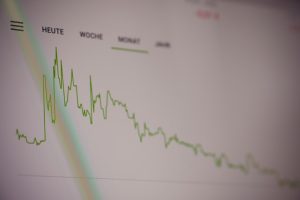Forex trading is all about making the right decisions at the right time. One of the crucial steps in making such decisions is to determine the daily trend in forex. Understanding the trend of the forex market can help you identify the direction of the market and make informed trading decisions.
In this article, we will discuss how to determine the daily trend in forex.
What is a Forex Trend?
A forex trend is the direction of the market movement over a period of time. The trend can be upward, downward, or sideways. The upward trend is characterized by higher highs and higher lows, while the downward trend is characterized by lower highs and lower lows. A sideways trend is characterized by the absence of a clear trend direction, with prices moving within a defined range.
Importance of Determining the Daily Trend in Forex
Determining the daily trend in forex is important for several reasons. Firstly, it helps you understand the general direction of the market, which is crucial when making trading decisions. Secondly, it helps you identify potential entry and exit points for your trades. Lastly, it helps you manage your risk by avoiding trades that go against the trend.
How to Determine the Daily Trend in Forex?
There are several ways to determine the daily trend in forex. Below are some of the most commonly used methods:
1. Moving Averages
Moving averages are one of the most popular tools used by traders to determine the trend. A moving average is calculated by taking the average price of an asset over a specified period. The most commonly used periods are 50, 100, and 200 days.
When the price of an asset is above the moving average, it is considered an uptrend, and when it is below the moving average, it is considered a downtrend. Traders can use multiple moving averages to identify the trend direction and potential entry and exit points.
2. Trendlines
Trendlines are another popular tool used by traders to determine the trend. A trendline is a line drawn on a chart connecting two or more price points. When the trendline is sloping upwards, it indicates an uptrend, and when it is sloping downwards, it indicates a downtrend.
Traders can draw trendlines on different timeframes to identify the trend direction and potential entry and exit points.
3. Price Action Analysis
Price action analysis involves analyzing the price movements of an asset to determine the trend direction. Traders can use different price action patterns, such as higher highs and higher lows for an uptrend, and lower highs and lower lows for a downtrend.
Price action analysis can be combined with other technical analysis tools to confirm the trend direction and identify potential entry and exit points.
4. Oscillators
Oscillators are technical indicators that measure the momentum of an asset. The most commonly used oscillators in forex trading are the Relative Strength Index (RSI) and the Moving Average Convergence Divergence (MACD).
When the RSI or MACD is above the 50 level, it indicates an uptrend, and when it is below the 50 level, it indicates a downtrend. Traders can use multiple oscillators to confirm the trend direction and identify potential entry and exit points.
Conclusion
Determining the daily trend in forex is crucial for making informed trading decisions. Traders can use different methods, such as moving averages, trendlines, price action analysis, and oscillators, to identify the trend direction and potential entry and exit points.
It is important to note that no single method is perfect, and traders should use multiple methods to confirm the trend direction and avoid false signals. With practice and experience, traders can develop a reliable system for determining the daily trend in forex and make profitable trades.





